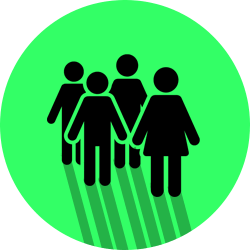Data Blog
You’re reading our Data Blogs, a great way of getting quick facts, and the latest data, on different public health topics.
Mood & Anxiety Disorders in Canada Published: ()
Mood and anxiety disorders are the most common types of mental illnesses, and they affect Canadians of all ages.
So what’s the difference?
Mood disorders are characterized by the lowering or elevation of a person’s mood and include major depressive disorder, bipolar disorder, dysthymic disorder and perinatal/postpartum depression.
Anxiety disorders include excessive and constant feelings of nervousness, anxiety and even fear. They include generalized anxiety disorder, phobias, post-traumatic stress disorder, among others.
Although mood and anxiety disorders are distinct, one person will often experience both. Each of these disorders can have a major impact on a person’s life and as a result, are a significant public health challenge in Canada. That’s why The Public Health Agency of Canada works with provinces, territories and national organizations to monitor and report on the burden, the wide ranging impacts, and the trends of these disorders in order to better inform prevention efforts and health care services in Canada.
Here are some of our findings:

1 in 10
More than 1 in 10 Canadians aged 18+ report having a mood and/or anxiety disorder. [SLCDC, 2014]
3.5 million
Every year, close to 3.5 million Canadians use health services for mood and/or anxiety disorders, of which 258,000 are children and youth (1-19 years). [CCDSS, 2016]

3/4
Roughly three-quarters of Canadians who use health services for a mental illness in a given year use them for mood and/or anxiety disorders. [CCDSS, 2016]
x2
Mood and anxiety disorders are more common among women than men. [O’Donnell et al, 2015]

30-54 years old
The age group that uses health services for mood and/or anxiety disorders the most is middle-aged Canadian adults (30-54 years), followed by older adults (55 years and older). [CCDSS, 2016]
35%
Over one-third of working Canadians diagnosed with a mood and/or anxiety disorder(s) say they had to stop work at some point because of their disorder(s). [SLCDC, 2014]

65%
Family doctors are the most consulted health professional for mood and anxiety disorders (65%) followed by non-physician health professionals (35%), including psychologists and social workers, counselors, psychotherapists. [SLCDC, 2014]